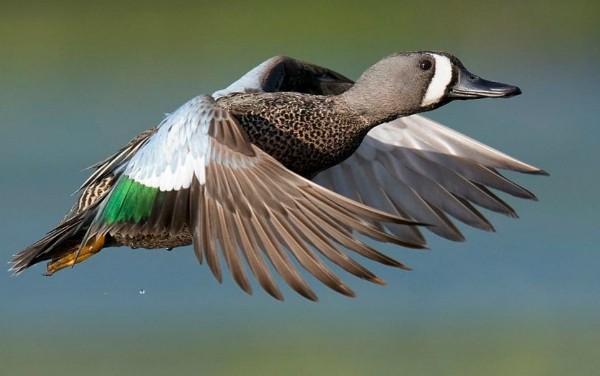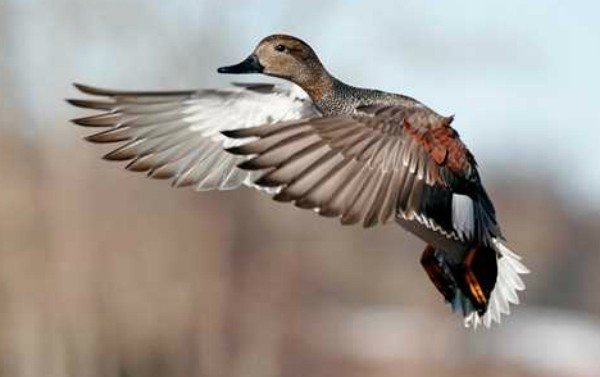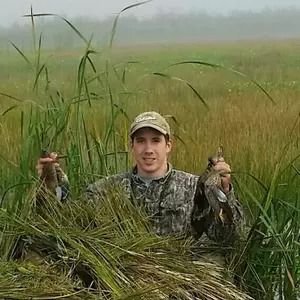Choosing the right size of shot for ducks can make the difference between clean kills and chasing cripples. As waterfowl hunters, it is our responsibility to make sure we do everything we can to take clean and ethical shots. We can never completely eliminate cripples. However, by choosing the correct shot size for ducks and spending some time patterning the load, we can drastically increase our success in the field and the number of clean shots.
Selecting the Right Shell
If you want to pick the right shell for ducks, a very important step is to pattern your shotgun. The difference between a load of No 2’s and a load of No. 3’s may not look like much when you compare the stats, but your pattern density may be greatly affected, making one size of shot more desirable. Here is what you will need.
- Shotgun
- Choke tubes
- Hearing and eye protection
- Target stand
- Large sheet of cardboard or paper
- Shotgun shells
Shot Sizes
Shot sizes for duck loads generally range from No. 6’s (.110), up to No. 2’s or BB’s (.180). When determining what size is needed, you need to consider the pattern density and pellet energy. For smaller birds, you want to go with a smaller pellet. This allows you to put more shot on target, and it still has enough energy to penetrate to the vitals. For larger birds, you need a heavier shot that has more knockdown power, and less shot is needed because of the size of the target.
Small Ducks

When shooting small ducks such as Teal, or other birds such as Snipe, a smaller shot size is going to be the best option. Teal fly quickly and have an erratic flight pattern, so smaller pellets will allow you to have a wider, denser pattern. I like to shoot Federal 12 ga., 1= 1/8, 3-in, No. 6’s. These shells pattern really nicely out of my shotgun and the price is reasonable. Most No. 5 or No. 6 shot shells will work well for any small duck.
Medium Ducks

Medium ducks will be your Gadwall, Scaup, Wood duck, and Wigeon. These are a little bigger, and they do not fly quite as fast as teal, so I like to step up to No. 4’s. I shoot No. 4’s for the middle portion of our duck season when we see a mixed bag. We mostly see Gadwall and Wigeon during this time, but No. 4’s still work well for teal or the early migrating mallard. I get excellent patterns out of Rio Bluesteel, 12 ga., 1 1/8, 3-in, No. 4’s. I buy these in store at my local Cabelas when they go on sale, and can pick them up at a really great price for quality waterfowl loads.
Large Ducks

Around my area, large ducks mainly consist of Mallards. We do see the occasional Canvasback, and small Geese can be grouped in with this category as well. I personally like to shoot No. 2’s as that is what patterns well for me. These birds are larger, and a lot of shots may be at birds hovering over the decoys. However, when you start getting into this size of shot, it is very important to pattern your shotgun. The difference between one or two shot sizes can really make a difference. For large ducks, anything from No. 3’s, up to BB, could be a recommended shot size. When we start to see more Mallards, I switch from No. 4’s to Rio Bluesteel, 12 ga., 1 1/8, 3-in, No. 2’s.
Patterning
Once you have picked the right shot size, you will want to get to the range and pattern your shotgun. You may find that different brands of shells perform differently with various shot sizes. Don’t forget that all of your pellets will be centered on your target when it is stationary. However, when swinging on a bird, you will have a shot string. Even after you find the perfect load that patterns great, it is still recommended to get out and shoot some clay targets to make sure you are comfortable with the shell. For me, the extra practice is always helpful as well!
What Shot Size For Ducks Final Thoughts
I learned about shot sizes mostly through trial and error. I found myself missing shots that I thought I hit, and wounding birds that should have gone down hard. Especially for new hunters, I cannot stress enough the importance of having the right size shot and a shell that has been patterned. It can be very frustrating to sit in the blind for half the morning only watch a duck fly away because your shot size wasn’t large enough to knock it down. Spending time in the off-season testing different shells and shot sizes is a great way to cure the summer-blues when we are all looking forward to cooler weather and early mornings in the blind. Follow these tips on shot sizes as a starting point, and you will find yourself having more successful hunts, and wounding fewer birds. Thank you for visiting Reloadingpresso.com. If you’re looking for more than what you see here, please review our Best Reloading Kit Buyers Guide and our Best Gun Safe Buyers Guide.

Mark is dedicated to improving his skills and prides himself in putting in the time and effort to be successful in the field. During the fall and winter he is focused on waterfowl hunting and will hunt every chance he has. He has a simplistic hunting style, often using only a handful of duck decoys over an ultra-low profile blind. When waterfowl season closes, you can find him fishing, camping, or at the shooting range preparing for 3 gun and IPSC competitions. Mark is passionate about hunting and the outdoors, and loves helping others get involved.

